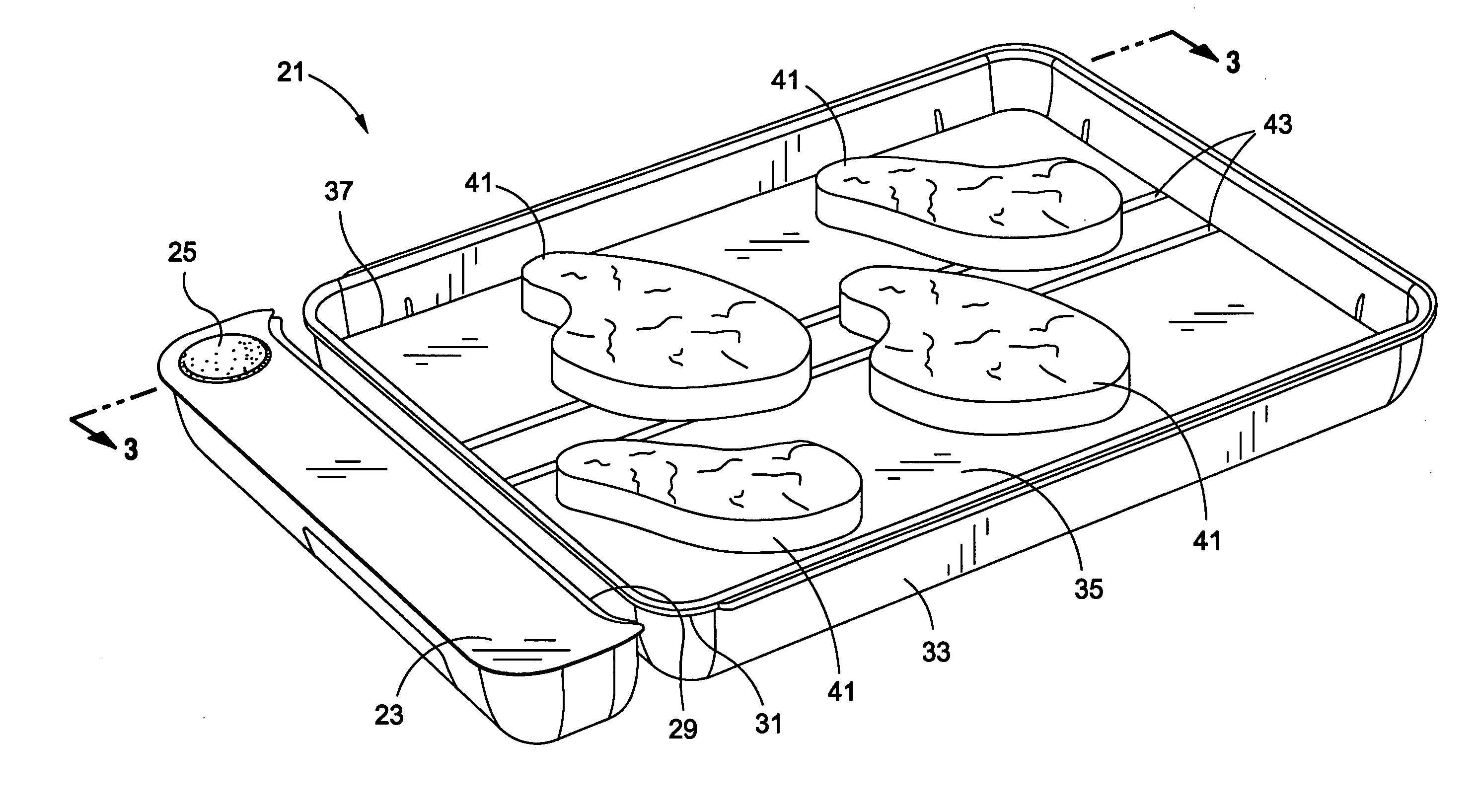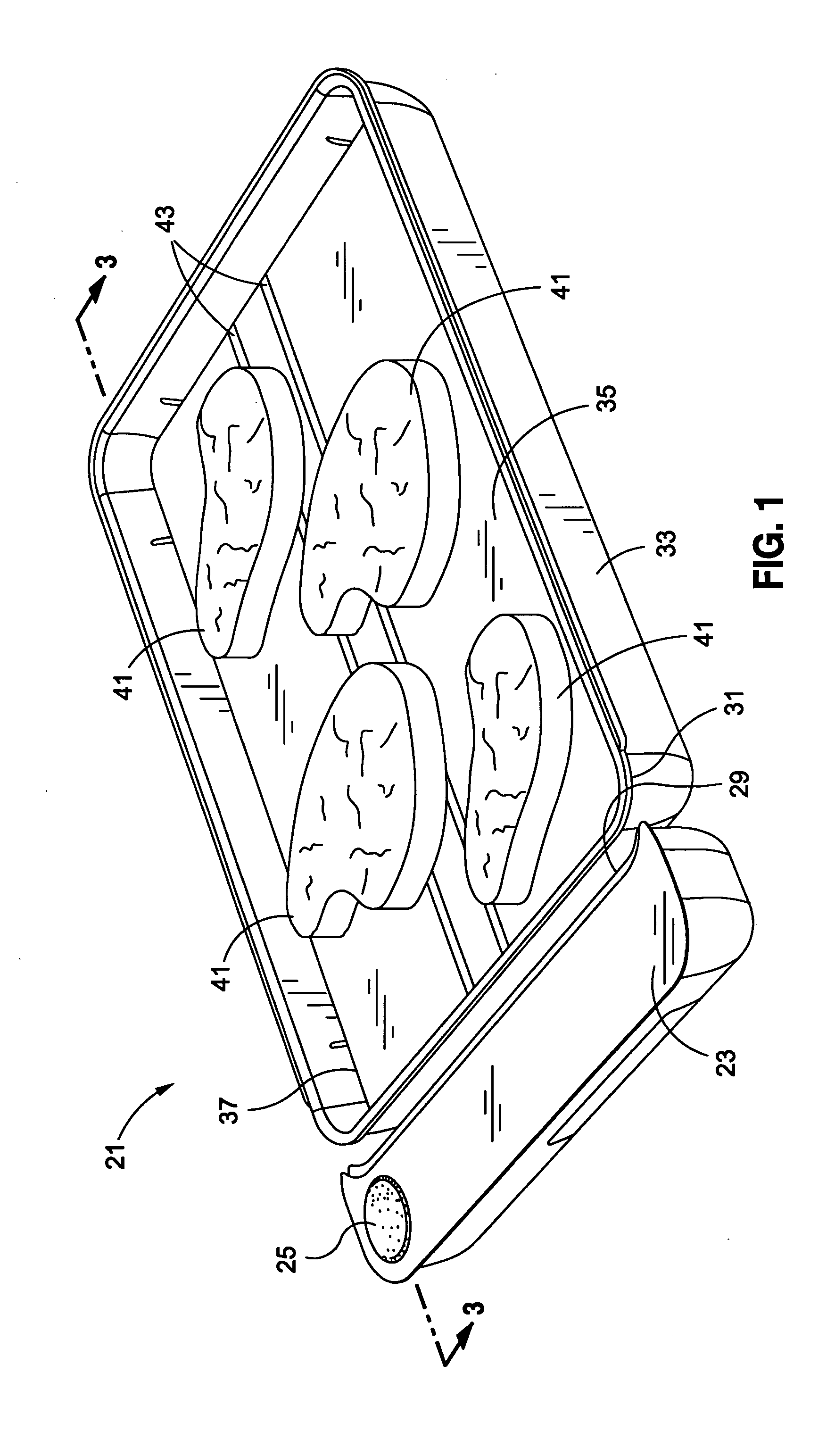Thaw plate system
a technology of thaw plates and thaw plates, which is applied in the field of thaw plate systems, can solve the problems of food poisoning, limited use of conventional thaw plates, and temporal bottleneck in this process, and achieve the effects of reducing costs, prohibitive expense, and better ability to clean the uni
- Summary
- Abstract
- Description
- Claims
- Application Information
AI Technical Summary
Benefits of technology
Problems solved by technology
Method used
Image
Examples
Embodiment Construction
[0028]The description and operation of the thaw plate system 21 of the invention will be best described with reference to FIG. 1 which illustrates the assembled and operational thaw plate system 21 but without the cover (not shown) for clarity. The thaw plate system 21 includes a motor unit 23 shown partially spaced apart from the other structure to the right, and having an on / off button 25. The motor unit includes a concave curved portion 29 which mates with an edge and opposite convex curved portion 31 of a plate support tray 33. The number 33 is pointing at the outer wall of an overall “U” cross sectional shape of each side (as will be shown). The plate support tray 33 includes a thermally transmissive metal plate 35 which is preferably supported at an angle, having an upper end 37 showing a lesser height of plate support tray 33 above it, to a lower end 39 showing a greater height of plate support tray 33 above it.
[0029]Shown supported by the thermally transmissive metal plate 3...
PUM
 Login to View More
Login to View More Abstract
Description
Claims
Application Information
 Login to View More
Login to View More - R&D
- Intellectual Property
- Life Sciences
- Materials
- Tech Scout
- Unparalleled Data Quality
- Higher Quality Content
- 60% Fewer Hallucinations
Browse by: Latest US Patents, China's latest patents, Technical Efficacy Thesaurus, Application Domain, Technology Topic, Popular Technical Reports.
© 2025 PatSnap. All rights reserved.Legal|Privacy policy|Modern Slavery Act Transparency Statement|Sitemap|About US| Contact US: help@patsnap.com



